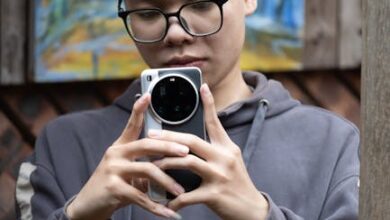The Expanding Reach of Face Recognition and Its Unseen Gaps

Face recognition technology, once the stuff of science fiction, has seamlessly woven itself into the fabric of our daily lives. From unlocking smartphones to boarding planes, verifying payments, and securing access to buildings, these biometric systems promise convenience, enhanced security, and streamlined interactions. They represent a significant leap forward in how we confirm identity and interact with the digital and physical world around us.
Yet, beneath the surface of this innovation lies a complex challenge that affects a significant portion of the global population. While intended to make life easier for everyone, these sophisticated algorithms sometimes stumble on a fundamental task: recognizing a human face that doesn’t fit its preconceived notions. The very systems designed for universal access can inadvertently become barriers for those they were meant to serve.
This is where the promise of cutting-edge technology confronts the reality of human diversity. For millions, the seamless interaction promised by face recognition turns into a frustrating, even dehumanizing, ordeal. When the technology fails to see a face as a face, it raises profound questions about inclusivity, accessibility, and the ethical development of artificial intelligence.
The Expanding Reach of Face Recognition and Its Unseen Gaps
The proliferation of facial recognition technology is undeniable. Law enforcement agencies use it for surveillance, businesses use it for customer authentication, and individuals rely on it for everyday tasks. This biometric technology promises quick, secure, and touchless verification, driving its rapid adoption across various sectors globally. It’s marketed as a universal solution for identity verification.
However, the “universal” label often overlooks a crucial demographic. An estimated 100 million people live with facial differences. As face recognition tech becomes widespread, some say they’re getting blocked from accessing essential systems and services. This isn’t merely an inconvenience; it can be a significant barrier to education, employment, healthcare, and even basic civic participation.
Imagine trying to access your bank account, board a flight, or even register for a critical government service, only to be repeatedly rejected because the system doesn’t register your unique facial features as a valid human face. This real-world scenario highlights a profound flaw in the design and implementation of many current facial recognition systems. The technology, despite its sophistication, often struggles with diversity.
When a facial recognition system fails to recognize an individual, it’s not just an error; it’s a denial of digital identity. This failure can lead to genuine hardships, creating a growing divide between those who can seamlessly navigate a tech-driven world and those who are left behind due to the inherent biases of the technology.
Algorithmic Bias: When AI Fails to See All Faces
The core issue often stems from algorithmic bias, a pervasive problem in artificial intelligence systems. Face recognition algorithms are trained on vast datasets of images. If these datasets disproportionately feature faces of a particular demographic – for instance, individuals with specific skin tones, ages, or facial structures – the system will inevitably perform poorly when encountering faces outside this dominant group.
For individuals with facial differences, this bias is particularly acute. Conditions resulting from birth defects, injuries, illnesses, or medical treatments can alter facial symmetry, structure, or skin texture in ways that current algorithms haven’t been adequately trained to process. The system isn’t designed to understand or adapt to this spectrum of human appearance, leading to consistent misidentification or outright rejection.
This isn’t a minor bug; it’s a systemic failure that can lead to digital exclusion. When identity verification relies solely on a biased facial recognition system, people with facial differences are effectively shut out. This exclusion extends beyond mere frustration; it can prevent access to critical services like online banking, secure travel, or even digital identity cards which are becoming increasingly commonplace.
The Human Cost of Systemic Blindness
The impact goes far beyond technical errors. Being repeatedly told that your face isn’t recognizable or that you don’t “look like a person” can have a profound psychological and emotional toll. It reinforces feelings of being an outsider, undermining dignity and trust in technological advancements that are supposed to benefit everyone.
Moreover, in an era where secure access is paramount, a flawed biometric system poses risks not just for individuals but for the broader society. If certain populations are consistently misidentified, it could lead to security vulnerabilities or, conversely, create a cumbersome dual system where some are forced to undergo more intrusive or time-consuming verification processes. This isn’t equitable or efficient.
The lack of inclusive design in the early stages of development means that the human-computer interaction for people with facial differences is often fraught with difficulty, leading to genuine instances of digital marginalization. This highlights a critical need for re-evaluation and recalibration of how these powerful tools are built and deployed.
Building Bridges: Towards More Inclusive Biometric Systems
Addressing this complex issue requires a multi-faceted approach, starting at the foundational level of technology development. The key to mitigating algorithmic bias lies in creating far more diverse and representative training datasets. These datasets must include a wide array of facial characteristics, including those presented by individuals with facial differences, to ensure the algorithms learn to recognize the full spectrum of human faces.
Furthermore, developers and system designers must adopt principles of inclusive design from the outset. This means proactively considering how different user groups will interact with and be affected by the technology, rather than treating accessibility as an afterthought. Regular auditing of AI systems for bias and performance across diverse groups is also crucial.
Beyond just technical improvements, there’s a need for robust ethical frameworks and policy guidelines. Governments and industry bodies should work together to establish standards that mandate inclusivity and ensure that biometric systems offer alternative, equally secure, and convenient methods of identity verification. No single system should be the sole gatekeeper to essential services.
Practical steps include implementing a “human in the loop” approach, where a human operator can intervene and provide alternative verification when automated facial recognition fails. This ensures that essential services remain accessible even when the technology falters. Encouraging feedback from affected communities can also provide invaluable insights for continuous improvement.
Ultimately, the goal is to develop face recognition technology that is not only highly accurate but also equitable and accessible to all. This means fostering collaboration between technologists, policymakers, and advocacy groups representing people with facial differences. Only through such concerted efforts can we ensure that biometric systems serve as tools of empowerment rather than exclusion.
Conclusion
The promise of face recognition technology is immense, offering unparalleled convenience and security in an increasingly digital world. However, this promise cannot be fully realized until it genuinely serves everyone. The challenges faced by the millions living with facial differences highlight a critical area where innovation must meet empathy and equity.
Moving forward, the onus is on us – as developers, policymakers, and consumers – to demand and build more inclusive biometric systems. By prioritizing diverse training data, ethical AI development, and accessible design principles, we can ensure that facial recognition technology evolves into a truly universal tool. Let us strive for a future where technology amplifies human connection and access, rather than creating new barriers. It’s time to ensure that every face is seen, recognized, and respected by the digital world we are building.





